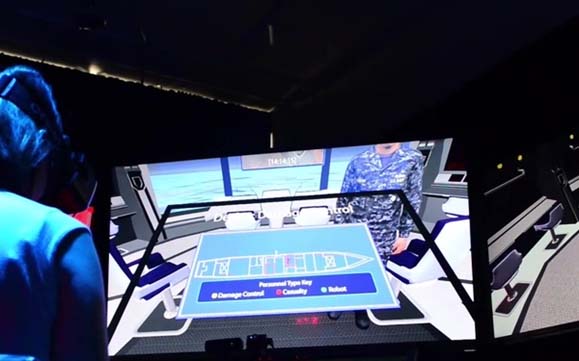Anatomical avatars of Service members guide medical caregivers in treating blast-related injuries in austere environments.
To enable and maintain a ready force that prepares for and responds to new threats within multi-domain operations with agility and speed, it is critical to develop improved strategies to protect against, mitigate, and treat blast injuries. Medical caregivers may need to provide prolonged medical care for blast injuries in resource-constrained settings such as dense urban environments and under austere conditions. Across the DOD, dedicated researchers with deep domain expertise pursue technologically advanced and highly specialized solutions in advancing, for example, tactical measures for combat casualty care (TC3). This project1 introduces an augmented reality (AR) visualization tool compatible with the U.S. Army Integrated Visual Augmentation System (IVAS) and Microsoft HoloLens 1 (Microsoft, Redmond, WA) that supports combat medics and Soldiers during buddy care scenarios involving clinical evaluation, diagnostics, and treatment procedures; providing information about patient anatomy at the point of injury. This application features the following components that were assessed in both AR clinical and outdoor medicine settings1:
The researchers1 identified key differences in performance capabilities between the AR clinical and outdoor scenarios, which they plan to address in follow-on projects: (1) varying levels of background lighting can affect the tracking functions of the HoloLens; (2) low-contrast environments pose difficulties in differentiating between elements like camouflage uniforms, dirt, and blood; (3) medical imaging data acquired in clinical settings depicts the current patient anatomy more accurately than the pre-loaded, healthy anatomy that is superimposed on the Service member avatar in the field; and (4) large discrepancies exist in computing speed and network reliability between clinical and outdoor environments.
Further refinement of the compatibility between the IVAS and the second generation of the HoloLens is key in driving the implementation of an integrated forward surgical care tool that can help support the training of medical caregivers with different levels of experience. This development can improve lifesaving capabilities on the battlefield by guiding Soldiers through treatment protocols and play an important part in training scenarios1 in the ever-evolving TC3 landscape, improving Force health readiness.

1 Leuze, C., Zoellner, A., Schmidt, A. R., Cushing, R. E., Fischer, M. J., Joltes, K., & Zientara, G. P. (2021). Augmented reality visualization tool for the future of tactical combat casualty care. Journal of Trauma and Acute Care Surgery, 91(2S), S40-S45.
This work was supported by the Defense Health Agency Small Business Innovation Research program under contract W81XWH18C0132
Your 15 minute session will timeout in approximately 10 minutes.
If you're in the middle of entering information, please close this warning and save your progress (if possible) or finish up your task.
If your session fully times out, you will lose any un-saved work.
Your current Blast Injury Research Program session has expired.
Your next click will take you away from the private area, and you will lose any work you have in-progress.
Please enter your email address, and try again.